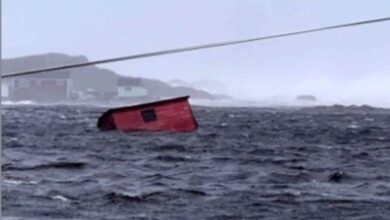Grapes of wrath: How scientists are trying to save America’s smoke-damaged wine industry as wildfires sweep the west

In California wine country, there’s a waiting list arguably more prized than the three Michelin-starred French Laundry. It exists for a handful of laboratories capable of testing wineries’ smoke-damaged grapes in the wake of wildfires.
This damage, called taint, is a recurring problem for winemakers in the American west, where wildfires are now ripping across the landscape at an unprecedented rate.
Climate change is driving a confluence of problems for the $340bn (£270bn) global wine industry. Prolonged heatwaves and multi-year droughts, interspersed with erratic storms and record-setting rainfall, have upended the stability of agricultural seasons. And then, there are events which erupt with even less warning: wildfires.
Huge fires devastated wineries in Provence, France days before the 2021 harvest; winemakers in Greece, Italy, Portugal and Spain suffered similar impacts. In New World wine countries, blazes exploded across vast expanses of Australia and Argentina. California, Oregon and Washington, among the US’s top wine-producing states, have seen wildfires grow in size, ferocity and unpredictability in the past decade.
California has the largest US market share, making $43.6bn in 2021. In October 2017, a wave of wildfires devastated more than 100,000 acres in Napa and Sonoma counties with the Tubbs Fire becoming the most destructive in the state to date. (It was overtaken by the Camp Fire the following year.)
Then, 2020. The LNU Lighting Complex, a monster blaze which saw several smaller fires combine, raged across 363,220 acres in wine country for six weeks from late summer into fall, destroying 1,500 buildings and killing six people.
Even if they escape the flames, winemakers are not necessarily out of the woods. ”Sometimes wildfires are 100 miles away but the smoke will travel and sit in a valley for two weeks on top of the fruit,” Charles Slocum, co-founder of sensory sciences company, Tastry, told The Independent.
Chemicals in wildfire smoke can be absorbed through grape skins, concealing their original taste and smell. If these grapes are then crushed into wine, it creates an unpleasant, even nasty taste, ranging from burnt and ashy to medicinal. Or even, as one taster suggested, “fecal plastic”.
Undrinkable wine could mean millions of dollars poured down the drain for a winemaker and the end of a business.
Following the devastating 2020 fire season, some California wineries requested that grapes be tested for smoke taint before they purchased the fruit. But due to how far-reaching the smoke damage was, labs could not keep up with demand.
California’s wineries lost an estimated $3.7bn, according to one of the industry’s leading analysts, due to both fire damage and grapes that were unusable from smoke exposure.
Testing for smoke taint can also be critical to provide evidence of a loss in order to claim on crop insurance. In September 2020, the situation was so dire that a group of West Coast wine grape-growers and farming associations asked Congress for disaster relief.
“We fear these wildfires, and potentially more to come, will result in the greatest economic loss, due to a natural disaster, ever suffered by the industry in our states,” the letter read.
Katrina Axelsson, the founder and CEO of Tastry, said that such was the devastation to the wine industry that she felt compelled to step in.
“We have a very advanced lab, and providing testing for typical smoke chain indicators was a relatively simple thing for us to do,” she told The Independent.
Axelsson, who began her career in the wine industry as a quality control chemist, created Tastry to provide a more science-based method for scoring wine. “Instead of being judged for not appreciating products rated highly by someone else, we expose all wine lovers and newbies to wines based on ratings produced by unique palate survey answers,” the company website explains.
It does so by using advanced chemistry, machine learning and artificial intelligence. “We like to say we taught a computer how to taste,” she says.
In 2020, that high-tech approach was pivoted to so-called “smoke taint amelioration” to predict how it would affect the taste, aroma, and texture of wine.
“We felt compelled to do it because there were only a few labs in the United States that were able, or advanced enough, to do this test. Very quickly, because of the wildfire season, they were inundated and turning people away,” Axelsson continued.




